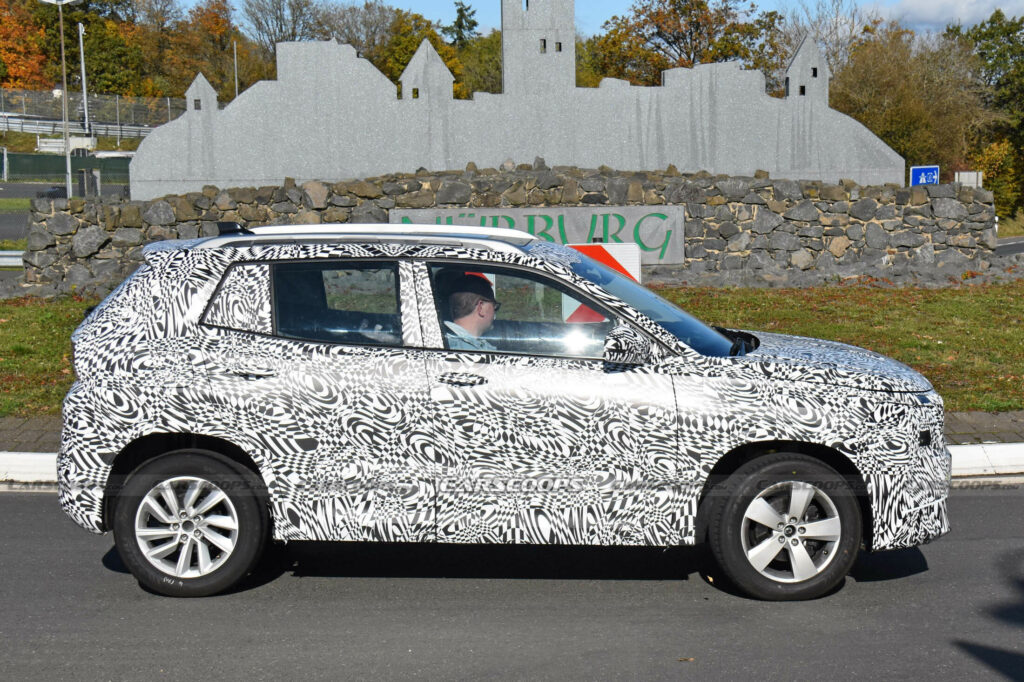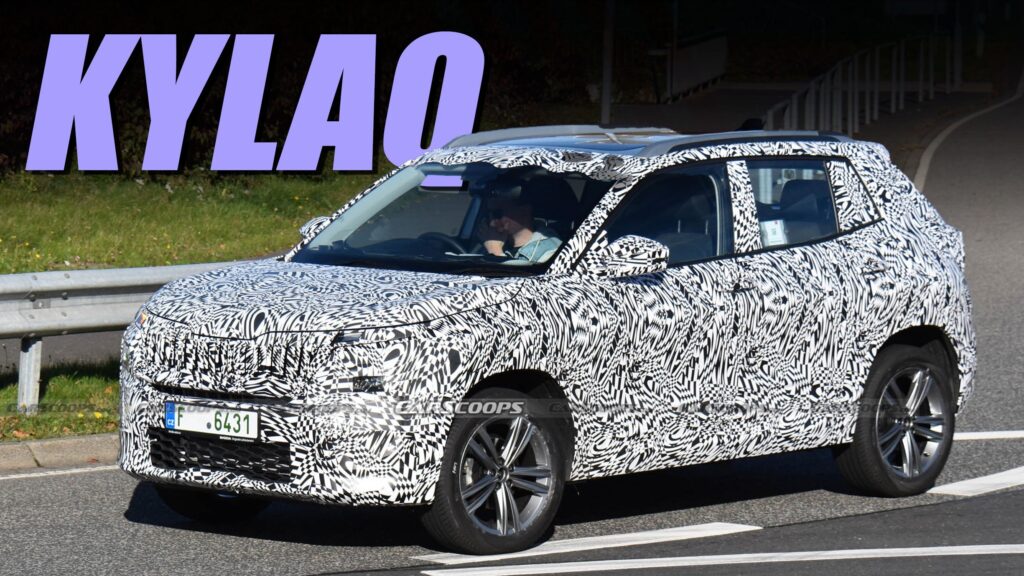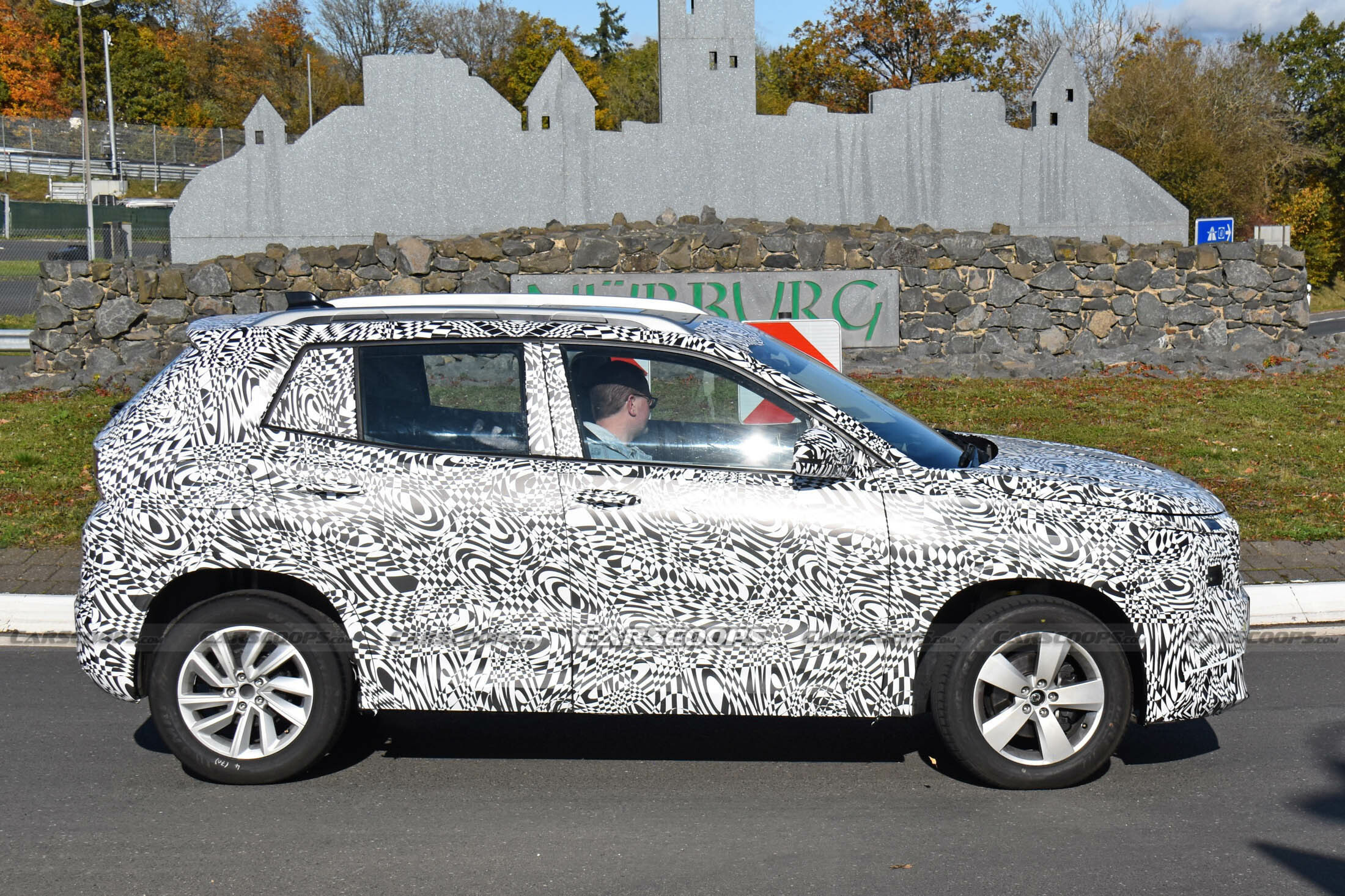- Skoda’s tiny 4 m (157.5 inches) Kylaq has been snapped testing only days before the SUV’s global reveal on Nov 6.
- This prototype was spied in Germany but the Kylaq is aimed at the Indian market and won’t be sold in Europe.
- Power comes from a 1.0 TSI engine mated to a choice of six-speed manual or six-speed auto transmissions.
Skoda has proved it’s more than capable of holding it own on the European stage, but now its about to enter an even more competitive arena. The brand’s new Kylaq SUV is jumping into the sub-4-meter (157.5 inches) car segment that is the hottest in India’s massive car market.
The Kylaq is aimed squarely at Indian buyers and won’t be sold in Europe. But it still put in some test miles at Germany’s Nurburgring, just as any other Skoda prototype would. Images – particularly the profile shot taken on the roundabout close to the famous circuit entrance – show just how tiny the 3,995 mm (157.2 inches) machine is.
Related: Skoda Can’t Stop Making SUVs And The Tiny Kylaq Is Its Next Big Bet
But Kylaqs are destined to spend their time on roads far much tougher than Germany’s perfectly smooth ones, so the engineers have also subjected it to 500,000 miles (800,000 km) of Indian conditions, which Skoda proudly says is more than the distance from Earth to the moon and back.
Repeated journeys on rough roads can soon turn a new car into a quivering mess, so Skoda’s engineers spent plenty of time putting the Kylaq through a shaker test to make sure the interior trim doesn’t rattle, and left components in open weather to check how they hold up to extreme sun.

Like the Kushaq and Slavia, two older Skodas built for India, the Kylaq rolls on VW’s locally developed MQB-A0-IN platform. Power comes from a 1.0-liter turbocharged three-cylinder petrol engine that buyers will be able to pair with either a six-speed manual or six-speed automatic transmission. And to remind us that India isn’t quite the safety backwater it was a few years ago, the Kylaq also gets a bevy of airbags and electronic safety aids, though nothing that would impress a Volvo or Mercedes engineers.
And if you’re wondering about the name, it’s derived from the Sanskrit word for crystal “reflecting both the vehicle’s pristine qualities and inspiration.” Sounds a bit OTT for a car that would be too ordinary to get European buyers excited. But it looks like it might have what it takes to find plenty of enthusiastic buyers in India.


















